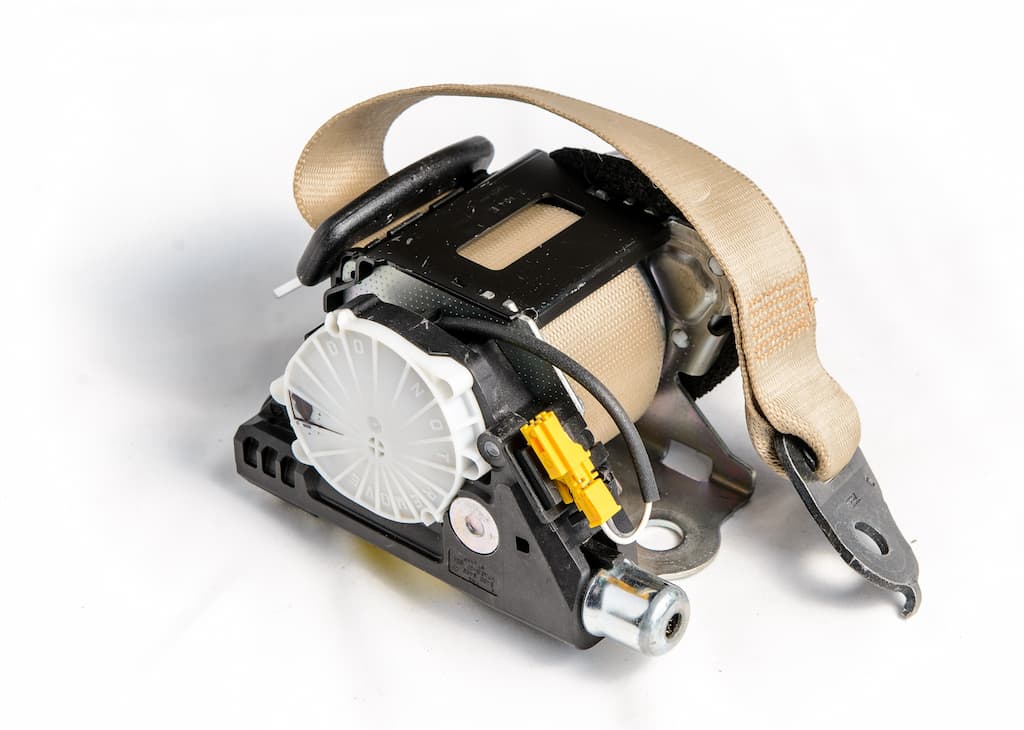Car seat belt pretensioners are devices that are designed to tighten the seat belt in the event of a collision, before the occupant has a chance to move forward. They are typically located at the base of the seat belt and are activated by a sensor that detects the impact of a collision.
When the sensor is triggered, the pretensioner fires a small explosive charge that retracts the seat belt webbing, tightening it around the occupant's body. This helps to keep the occupant from being thrown forward in the collision and reduces the risk of serious injury or death.
Car seat belt pretensioners are an important safety feature in modern vehicles. They are required by law in many countries, and they have been shown to be very effective in reducing the number of fatalities and serious injuries in car crashes.
Seat Belt Pretensioners represent a remarkable advancement in vehicle safety technology. These devices play a pivotal role in ensuring that seat belts provide optimal protection during collisions by rapidly eliminating any slack and securing occupants in place. By augmenting the overall efficacy of seat belts, car seat belt pretensioners contribute to safer journeys on the road, underscoring the automotive industry's unwavering commitment to occupant safety.
Seat belt pretensioners are a crucial component of modern automotive safety systems, designed to enhance the effectiveness of seat belts during a collision. By tightening the seat belt in the event of a crash, pretensioners help to secure occupants more firmly in their seats, reducing the risk of injury. This comprehensive guide explores the functionality, benefits, types, maintenance, and considerations for seat belt pretensioners, highlighting their role in improving vehicle safety.
Seat belt pretensioners are devices integrated into a vehicle's seat belt system that automatically tighten the seat belt when a collision is detected. This rapid tightening helps to remove slack from the seat belt, ensuring that the occupant is securely held in place before the full force of the impact occurs. Pretensioners work in tandem with other safety systems, such as airbags, to provide comprehensive occupant protection.
Activation Mechanism - Seat belt pretensioners are equipped with sensors that detect a collision's severity and impact direction. When a significant impact is detected, these sensors trigger the pretensioner mechanism.
There are two primary types of activation mechanisms:
Deployment Process - The deployment process of seat belt pretensioners involves several key steps:

Mechanical Pretensioners - Mechanical pretensioners use a spring or compressed gas to tighten the seat belt. When a collision is detected, the mechanism is activated, and the seat belt is retracted. Mechanical pretensioners are less common than pyrotechnic pretensioners but still provide effective occupant protection.
Pyrotechnic Pretensioners - Pyrotechnic pretensioners use a small explosive charge to rapidly retract the seat belt. This type of pretensioner is more common in modern vehicles due to its quick response time and effectiveness. The explosive charge is triggered by the impact sensors, causing the seat belt to tighten instantaneously.
Enhanced Occupant Security - The primary benefit of seat belt pretensioners is the enhanced security they provide for vehicle occupants. By removing slack and tightening the seat belt, pretensioners help to position the occupant correctly against the seat, reducing the risk of injury from excessive movement.
Improved Airbag Efficiency - By holding the occupant in the optimal position, seat belt pretensioners improve the effectiveness of airbags. With the occupant securely in place, airbags can deploy and cushion the impact more effectively, reducing the risk of injury.
Reduction in Injury Severity - Studies have shown that seat belt pretensioners can significantly reduce the severity of injuries in a collision. By minimizing the forward movement of the occupant, pretensioners reduce the risk of contact with hard interior surfaces, such as the steering wheel or dashboard.
Complementary to Other Safety Systems - Seat belt pretensioners work in conjunction with other safety systems, such as load limiters, to provide comprehensive occupant protection. Load limiters allow a controlled amount of seat belt webbing to be released after the pretensioner has tightened the belt, preventing excessive force on the occupant's chest.